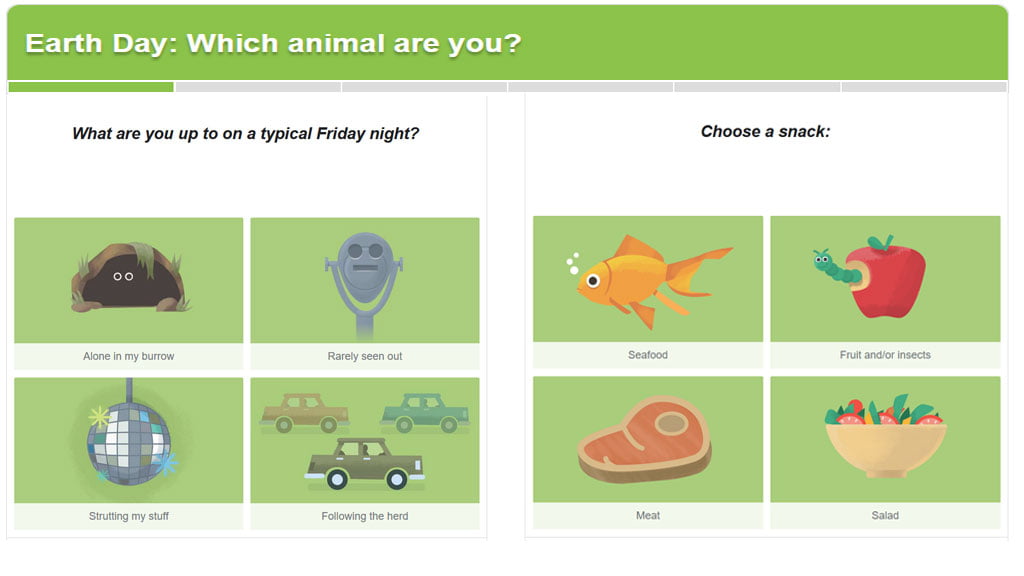Fun Facts About Teeth
Are you ready to dive into some amazing dental trivia questions? Teeth are fascinating and have a lot of fun facts you might not know. From the largest tooth ever recorded to ancient dental practices, there’s much to learn about our pearly whites. Let’s explore some intriguing and fun facts about teeth!
Largest Tooth Ever Recorded
Did you know the largest tooth ever recorded was found in a blue whale? Yes, that’s right! Blue whales, the largest animals on Earth, also have some of the biggest teeth.
Here are some fascinating facts about the largest tooth:
- Blue Whale Tooth: The largest tooth measured about 12 inches long. That’s almost as long as a ruler!
- Weight: This enormous tooth weighed over 2 pounds.
- Function: Blue whales don’t use their teeth for chewing. They have baleen plates to filter food from water.
Human teeth can’t compare to the size of a blue whale’s tooth, but they are still pretty impressive. The largest human tooth ever recorded was a molar, measuring 1.26 inches long. Can you imagine having such a big tooth in your mouth?
Ancient Dental Practices
Ancient civilizations had unique ways of taking care of their teeth. Some of their methods might surprise you!
Let’s take a look at some ancient dental practices:
- Egyptians: Ancient Egyptians used a mix of crushed eggshells and myrrh to clean their teeth. They also made dental tools from bronze.
- Romans: Romans used urine as a mouthwash because it contains ammonia, which can whiten teeth. Sounds strange, right?
- Chinese: Ancient Chinese used acupuncture to treat dental pain. They also created the first toothbrushes using bamboo and pig bristles.
These ancient methods might seem odd today, but they paved the way for modern dental care. Ancient people were resourceful and innovative, using the materials they had to keep their teeth healthy.
101 Dental Trivia Questions And Answers
Here’s a collection of 101 dental trivia questions categorized into various sections:
General Dental Knowledge
Q: What is the hardest substance in the human body?
A: Enamel.
Q: How many teeth does an adult human typically have?
A: 32.
Q: What is the primary function of molars?
A: Grinding food.
Q: At what age do children usually start losing their baby teeth?
A: Around 6 years old.
Q: What part of the tooth contains nerves and blood vessels?
A: Pulp.
Dental Care
Q: How often should you brush your teeth?
A: Twice a day.
Q: What is the recommended time to brush your teeth after eating?
A: 30 minutes.
Q: What mineral helps strengthen tooth enamel?
A: Fluoride.
Q: What is the name of the process used to clean teeth and gums at the dentist?
A: Prophylaxis.
Q: What is the main ingredient in most toothpaste?
A: Abrasives (like calcium carbonate) and fluoride.
Dental History
Q: Who is often called the “father of modern dentistry”?
A: Pierre Fauchard.
Q: What year was the first toothbrush invented?
A: 1938.
Q: In which country did dental braces originate?
A: France.
Q: What ancient civilization used gold wire to bind teeth together?
A: The Etruscans.
Q: What was used as toothpaste in ancient Egypt?
A: Mixtures of crushed rock salt, mint, and flowers.
Dental Diseases
Q: What is the most common chronic disease in children?
A: Dental caries (tooth decay).
Q: What is gingivitis?
A: Inflammation of the gums.
Q: What bacteria are primarily responsible for tooth decay?
A: Streptococcus mutans.
Q: What condition is characterized by the receding of gums?
A: Gum disease (periodontitis).
Q: What is the term for bad breath?
A: Halitosis.
Oral Health Tips
Q: What type of toothbrush is recommended for most people?
A: Soft-bristled toothbrush.
Q: How often should you floss?
A: At least once a day.
Q: What should you avoid eating to maintain good dental health?
A: Sugary snacks and drinks.
Q: What is the best type of mouthwash for daily use?
A: Antimicrobial or fluoride mouthwash.
Q: What is a dental sealant?
A: A protective coating applied to the chewing surfaces of back teeth.
Fun Facts About Teeth
Q: Which animal has the most teeth?
A: The alligator (up to 80 teeth).
Q: What is the average lifespan of a human tooth?
A: Lifetime if well cared for.
Q: What color can tooth enamel be?
A: Yellow, white, or grey.
Q: What is the term for extra teeth?
A: Hyperdontia.
Q: What can cause teeth to turn grey?
A: Excessive fluoride or certain medications.
Pediatric Dentistry
Q: What is the first tooth to erupt in infants?
A: Lower central incisor.
Q: At what age should a child have their first dental visit?
A: By age 1 or within 6 months of the first tooth.
Q: What is a common dental treatment for children with cavities?
A: Silver diamine fluoride.
Q: What is an important habit to teach children about oral hygiene?
A: Brushing for two minutes.
Q: Why are baby teeth important?
A: They help with speech and guide adult teeth into position.
Cosmetic Dentistry
Q: What is the most common cosmetic dental procedure?
A: Teeth whitening.
Q: What is a veneer?
A: A thin shell of porcelain or composite resin that covers the front surface of a tooth.
Q: What is the purpose of dental bonding?
A: To repair chipped or discolored teeth.
Q: What type of braces are clear and less visible?
A: Invisalign.
Q: What is a smile makeover?
A: A combination of cosmetic dental procedures to improve appearance.
Dental Instruments
Q: What tool is commonly used to scrape plaque off teeth?
A: Scaler.
Q: What is the purpose of a dental mirror?
A: To allow the dentist to see the back of the teeth and other areas.
Q: What instrument is used to measure the depth of gum pockets?
A: Periodontal probe.
Q: What tool is used to fill cavities?
A: Dental drill.
Q: What does an X-ray show in dentistry?
A: The internal structure of teeth and bones.
Nutrition and Dental Health
Q: What vitamin is essential for gum health?
A: Vitamin C.
Q: What type of food can help strengthen teeth?
A: Dairy products (rich in calcium).
Q: Which beverage is known to erode tooth enamel?
A: Soda.
Q: What is the impact of a high-sugar diet on dental health?
A: Increased risk of cavities.
Q: What mineral found in meat and fish can promote oral health?
A: Phosphorus.
Dental Procedures
Q: What is a root canal?
A: A treatment to remove infected pulp from inside a tooth.
Q: What is a dental crown?
A: A cap placed over a tooth to restore its shape and function.
Q: What is the purpose of orthodontics?
A: To correct misaligned teeth and jaws.
Q: What does a dental implant replace?
A: A missing tooth.
Q: What is the purpose of fluoride treatments?
A: To strengthen teeth and prevent decay.
Dental Myths
Q: True or False: You should brush your teeth immediately after eating.
A: False (wait 30 minutes).
Q: True or False: Mouthwash can replace brushing and flossing.
A: False (it should complement them).
Q: True or False: Sugar is the only cause of cavities.
A: False (bacteria also play a role).
Q: True or False: Whitening toothpaste can whiten teeth significantly.
A: False (they can only help with surface stains).
Q: True or False: It’s normal for gums to bleed when you brush.
A: False (it may indicate gum disease).
Dental Terminology
Q: What does “periodontal” refer to?
A: Relating to the structures around teeth.
Q: What is “occlusion”?
A: The alignment of teeth when the jaws are closed.
Q: What does “biopsy” mean in dentistry?
A: The removal of tissue for examination.
Q: What is “edentulous”?
A: Lacking teeth.
Q: What does “prophylaxis” mean?
A: Preventive dental treatment.
Notable Dentists
Q: Who was the first woman to graduate from dental school in the U.S.?
A: Lucy Hobbs Taylor.
Q: What did Dr. Horace Wells contribute to dentistry?
A: The use of nitrous oxide for anesthesia.
Q: Who is known for inventing the modern toothbrush?
A: Dr. Philippe Guy Woog.
Q: What notable contribution did G.V. Black make to dentistry?
A: Standardized dental cavity classifications.
Q: Who pioneered the field of cosmetic dentistry?
A: Dr. Charles Pincus.
Dental Education
Q: What degree do most dentists hold?
A: Doctor of Dental Surgery (DDS) or Doctor of Dental Medicine (DMD).
Q: How many years of education are typically required to become a dentist?
A: 8 years (4 undergraduate + 4 dental school).
Q: What is the term for a dentist who specializes in children’s dentistry?
A: Pediatric dentist.
Q: What is the purpose of dental continuing education?
A: To keep dentists updated on new techniques and treatments.
Q: What organization accredits dental schools in the U.S.?
A: Commission on Dental Accreditation (CODA).
Advances in Dentistry
Q: What technology is commonly used for imaging teeth?
A: Digital X-rays.
Q: What is laser dentistry used for?
A: Various treatments, including gum disease and tooth decay.
Q: What are CAD/CAM technologies used for in dentistry?
A: Designing and manufacturing dental restorations.
Q: What is 3D printing used for in dentistry?
A: Creating dental models and custom prosthetics.
Q: What are “smart toothbrushes”?
A: Toothbrushes with sensors to track brushing habits.
Global Dental Practices
Q: In which country did dentistry first emerge as a profession?
A: Egypt.
Q: What dental practice is common in many Asian cultures?
A: Chewing betel nut.
Q: What is the traditional method of cleaning teeth in some cultures?
A: Using sticks (miswak).
Q: Which country has the highest rate of dental caries?
A: The United States.
Q: What unique dental practice is observed in parts of Africa?
A: Tooth extraction as a rite of passage.
Celebrity Dentists
Q: Which famous musician has a dental degree?
A: Dr. John E. H. Baugh.
Q: Who is known as the “Rock Doc” for his work with rock stars?
A: Dr. Bill Dorfman.
Q: Which actor and comedian started a dental practice before becoming famous?
A: Steve Martin.
Q: What actress founded a charity for dental health education?
A: Ellen DeGeneres.
Q: Who is a well-known television personality and dentist?
A: Dr. Phil McGraw.
Dental Innovations
Q: What is the purpose of an electric toothbrush?
A: To provide more effective plaque removal.
Q: What are orthodontic retainers used for?
A: To maintain teeth position after braces.
Q: What is the benefit of dental tourism?
A: Affordable dental care abroad.
Q: What is “teledentistry”?
A: Remote dental consultations using technology.
Q: What innovative material is often used for fillings?
A: Composite resin.
Oral Hygiene Practices
Q: What is the ideal angle to hold a toothbrush?
A: 45 degrees to the gums.
Q: What is the purpose of using interdental brushes?
A: To clean between teeth.
Q: What is an important habit for maintaining fresh breath?
A: Regular tongue scraping.
Q: What type of floss is recommended for braces?
A: Waxed dental floss or orthodontic floss.
Q: What should you do if you have a dental emergency?
A: Contact your dentist immediately.
Q: What is the main message to promote oral health?
A: Regular dental check-ups and good hygiene practices are essential for maintaining healthy teeth and gums.
Dental Records In History
Dental Trivia Questions can be a fun way to learn about the history of dental care. One fascinating topic is Dental Records in History. Dental records have played a crucial role in identifying individuals and understanding health practices from ancient times. They offer a glimpse into the daily lives and health of people throughout history.
Famous Historical Figures
Many famous historical figures had unique dental records that tell interesting stories. For example:
- George Washington: The first U.S. President famously had false teeth, but contrary to popular belief, they were not made of wood. They were made from materials like ivory, human teeth, and metal.
- Napoleon Bonaparte: Napoleon’s dental records helped historians learn about his health. His dentist, Dr. Ivanov, kept detailed notes on his dental treatments.
- Queen Elizabeth I: Known for her black teeth, a sign of wealth at the time due to the high sugar consumption. Dental records indicate she suffered from severe tooth decay.
These records not only shed light on the personal lives of these figures but also provide insights into the dental technologies available during their times. Here’s a quick comparison table:
| Figure | Dental Records | Significance |
|---|---|---|
| George Washington | False teeth made of ivory and metal | Showed the use of prosthetics in the 18th century |
| Napoleon Bonaparte | Detailed notes by his dentist | Provided insights into his health |
| Queen Elizabeth I | Severe tooth decay | Indicated high sugar consumption |
Dental Care In Ancient Civilizations
Dental care has been practiced for thousands of years. Ancient civilizations had their unique methods and tools:
- Ancient Egyptians: Used a mixture of powdered ashes of ox hooves, myrrh, and burnt eggshells to clean their teeth. They also used gold wires to stabilize loose teeth.
- Ancient Romans: Known for their advanced dental practices. They used toothpicks and mouthwashes made from urine, believing it whitened teeth. Their dental tools included forceps and scalpels.
- Ancient Chinese: Used acupuncture to treat dental pain. They also developed the first toothbrushes made from boar bristles.
These practices highlight the evolution of dental care. Here’s a snapshot of dental methods in different civilizations:
| Civilization | Dental Practices | Tools Used |
|---|---|---|
| Egyptians | Mixtures for cleaning, gold wires for teeth | Powdered ashes, myrrh, gold wires |
| Romans | Toothpicks, mouthwashes | Forceps, scalpels |
| Chinese | Acupuncture, early toothbrushes | Boar bristles, needles |
Understanding these ancient practices shows how far dental care has come and how it continues to evolve.
Myths And Misconceptions
Dental trivia questions can be fun and educational. They help us learn more about oral health. Many myths and misconceptions surround dental care. Let’s debunk some of these myths and learn the truth about keeping our teeth healthy.
Sugar Causes Cavities
Many believe that sugar directly causes cavities. While sugar plays a role, it’s not the main culprit. Bacteria in our mouths feed on sugar. These bacteria produce acids as a result. These acids are what really cause cavities. They break down the enamel, leading to tooth decay.
Here are some key points to understand:
- Bacteria + Sugar = Acid: Bacteria consume sugar and produce acid.
- Acid + Enamel = Cavities: Acid wears down enamel, creating cavities.
- Saliva helps: Saliva neutralizes acid and helps protect enamel.
It’s not just candies and sweets. Foods like bread, fruits, and even milk contain sugars. Good oral hygiene and regular dental check-ups are crucial. Brushing twice a day and flossing help remove food particles and bacteria. Drinking water after meals can help, too.
Here’s a quick table to summarize:
| Factor | Role in Cavities |
|---|---|
| Sugar | Food for bacteria |
| Bacteria | Produce acid |
| Acid | Damages enamel |
| Saliva | Neutralizes acid |
Brushing Harder Cleans Better
Another common myth is that brushing harder cleans teeth better. Brushing harder can actually damage your teeth and gums. Enamel is the outer protective layer of your teeth. Brushing too hard can wear it down.
Key points to remember include:
- Gentle brushing: Use a soft-bristled toothbrush and brush gently.
- Correct technique: Brush in small circular motions, not back and forth.
- Two minutes: Brush for at least two minutes, twice a day.
Using a toothpaste with fluoride helps strengthen your enamel. Flossing is just as important as brushing. It removes food particles and plaque between teeth where a brush can’t reach. Over-brushing can lead to gum recession. This exposes the roots of your teeth, which can cause sensitivity.
Here’s a quick table to summarize:
| Action | Effect |
|---|---|
| Brushing gently | Protects enamel |
| Using soft-bristled brush | Prevents gum damage |
| Proper technique | Ensures thorough cleaning |
Remember, it’s not about how hard you brush, but how well you brush. Keeping these points in mind can help maintain a healthy smile.

Credit: twitter.com
Frequently Asked Questions
What Is The Hardest Substance In The Human Body?
The hardest substance in the human body is tooth enamel. It protects teeth from decay and damage. Enamel is even harder than bone.
How Many Teeth Does An Adult Human Have?
An adult human typically has 32 teeth. This includes 16 in the upper jaw and 16 in the lower jaw.
At What Age Do Children Usually Lose Their First Tooth?
Children usually lose their first tooth around age six. This is when their permanent teeth start to come in.
How Often Should You Visit The Dentist?
You should visit the dentist every six months. Regular check-ups help prevent cavities and gum disease.
Conclusion
Dental trivia questions can be both fun and educational. They help you learn about oral health in an engaging way. Keep sharing these interesting facts with friends and family. Boost your dental knowledge while having a great time. Stay curious and keep your smile bright!



